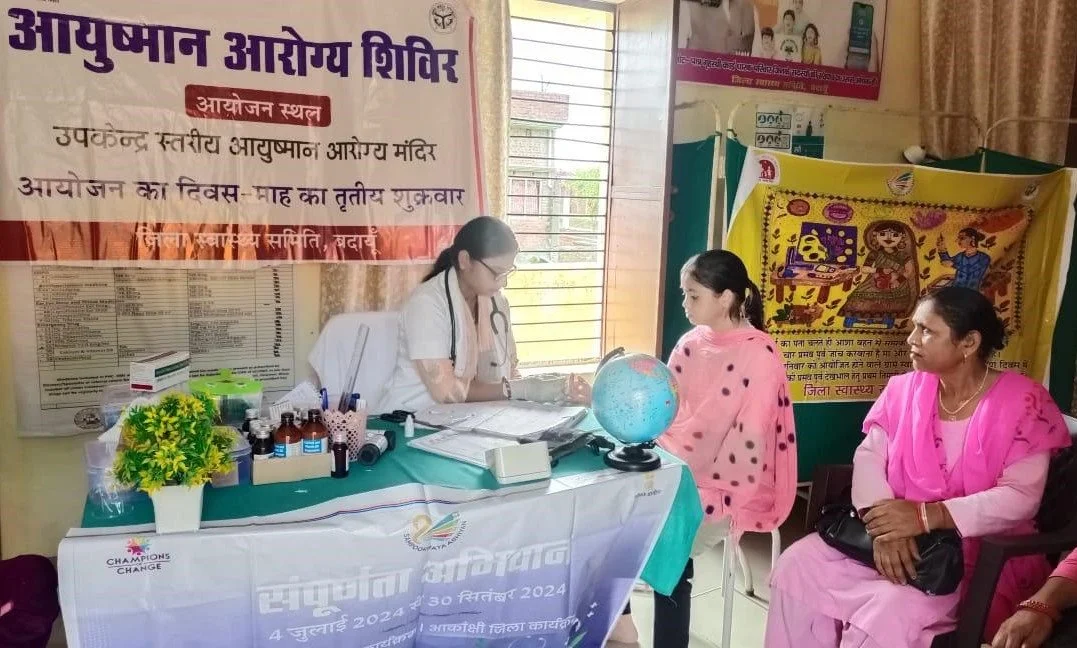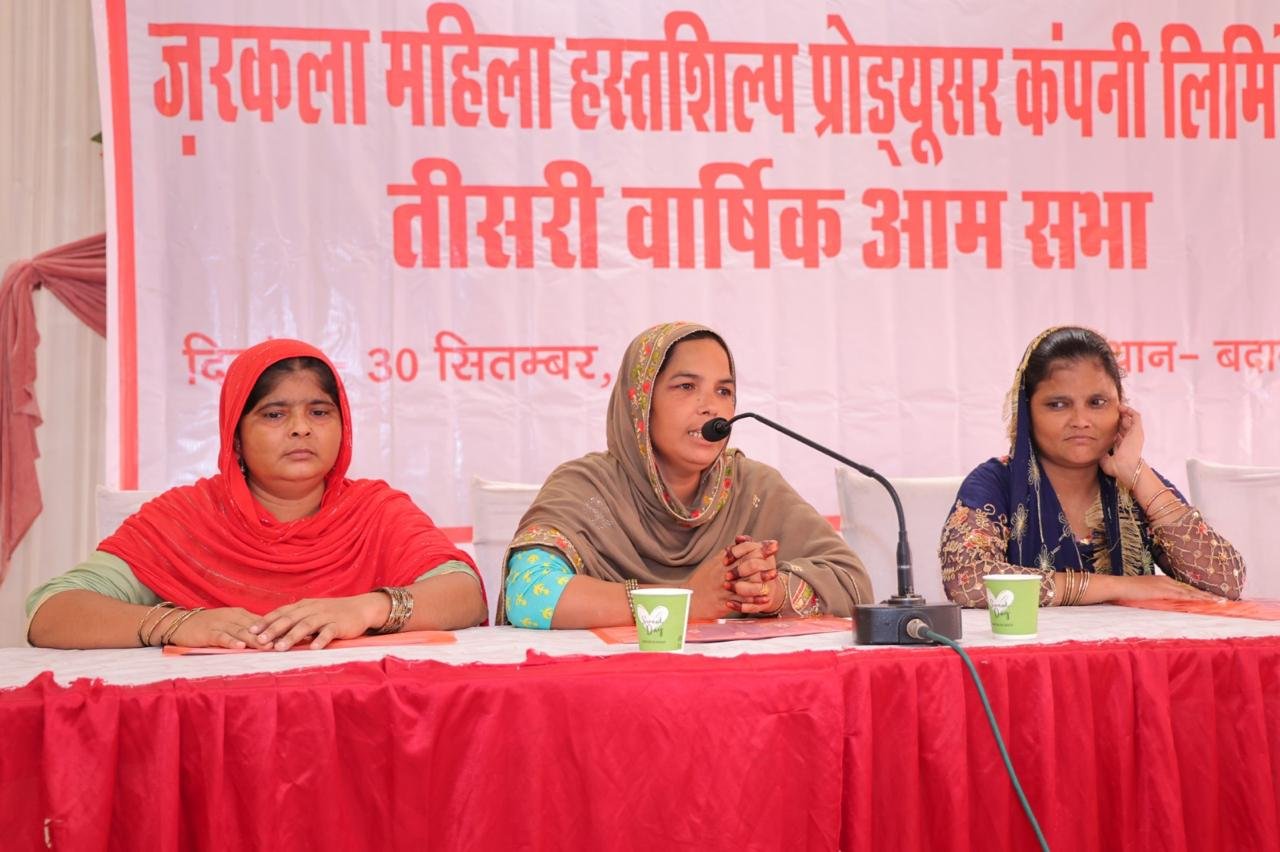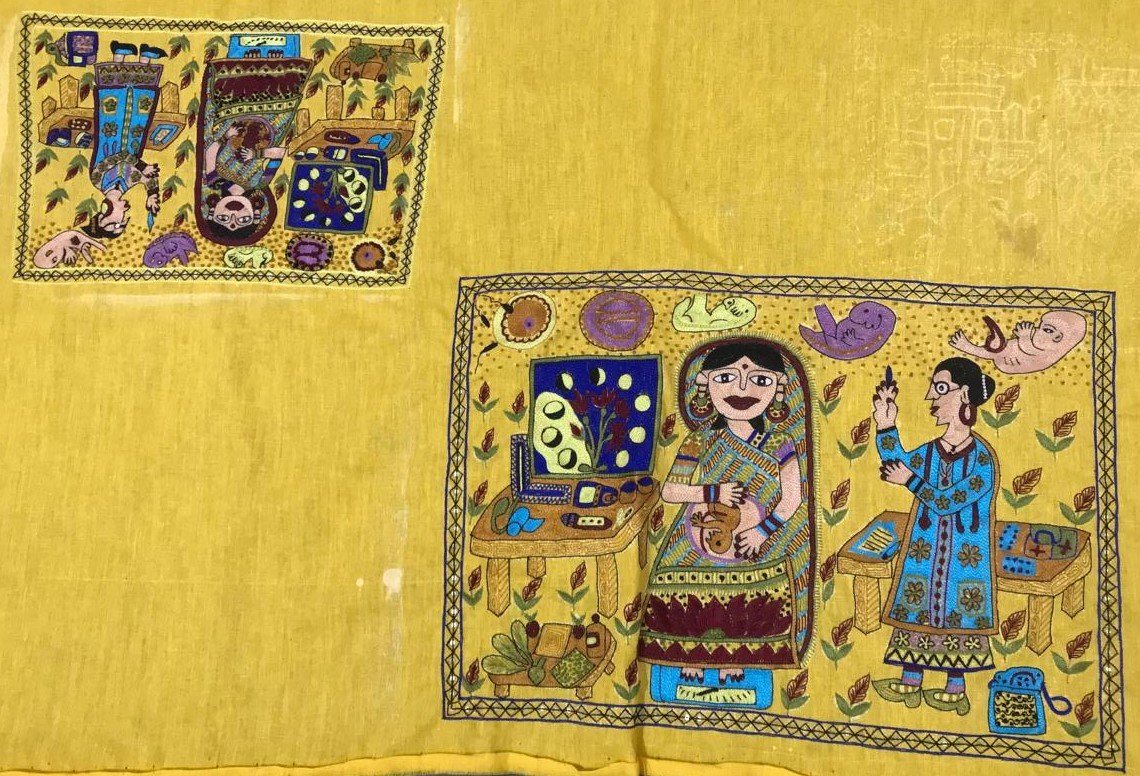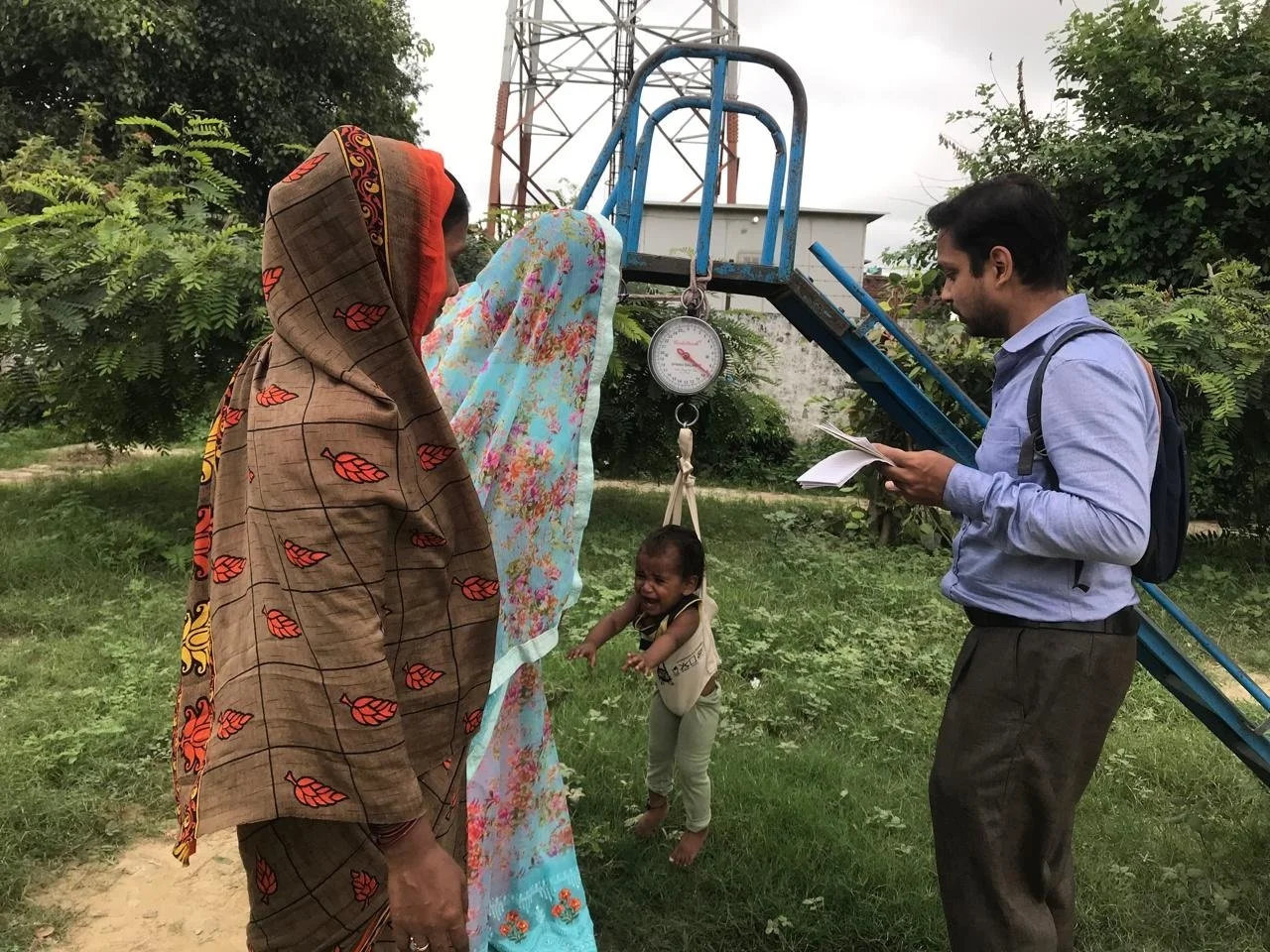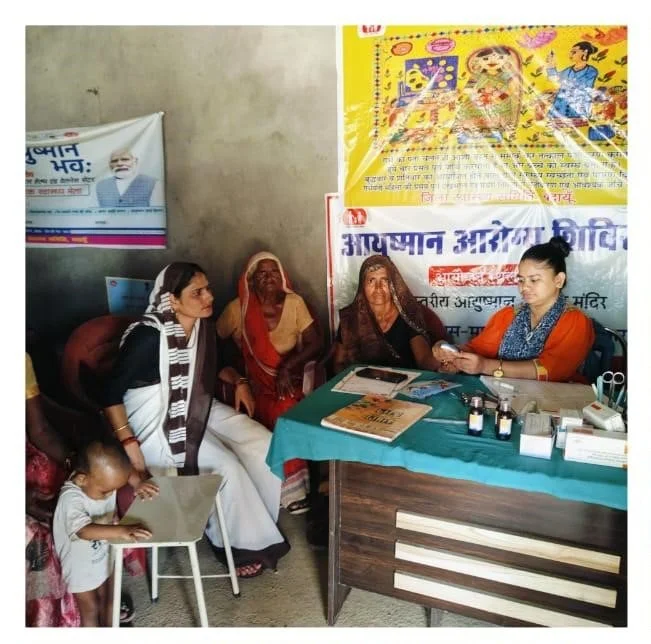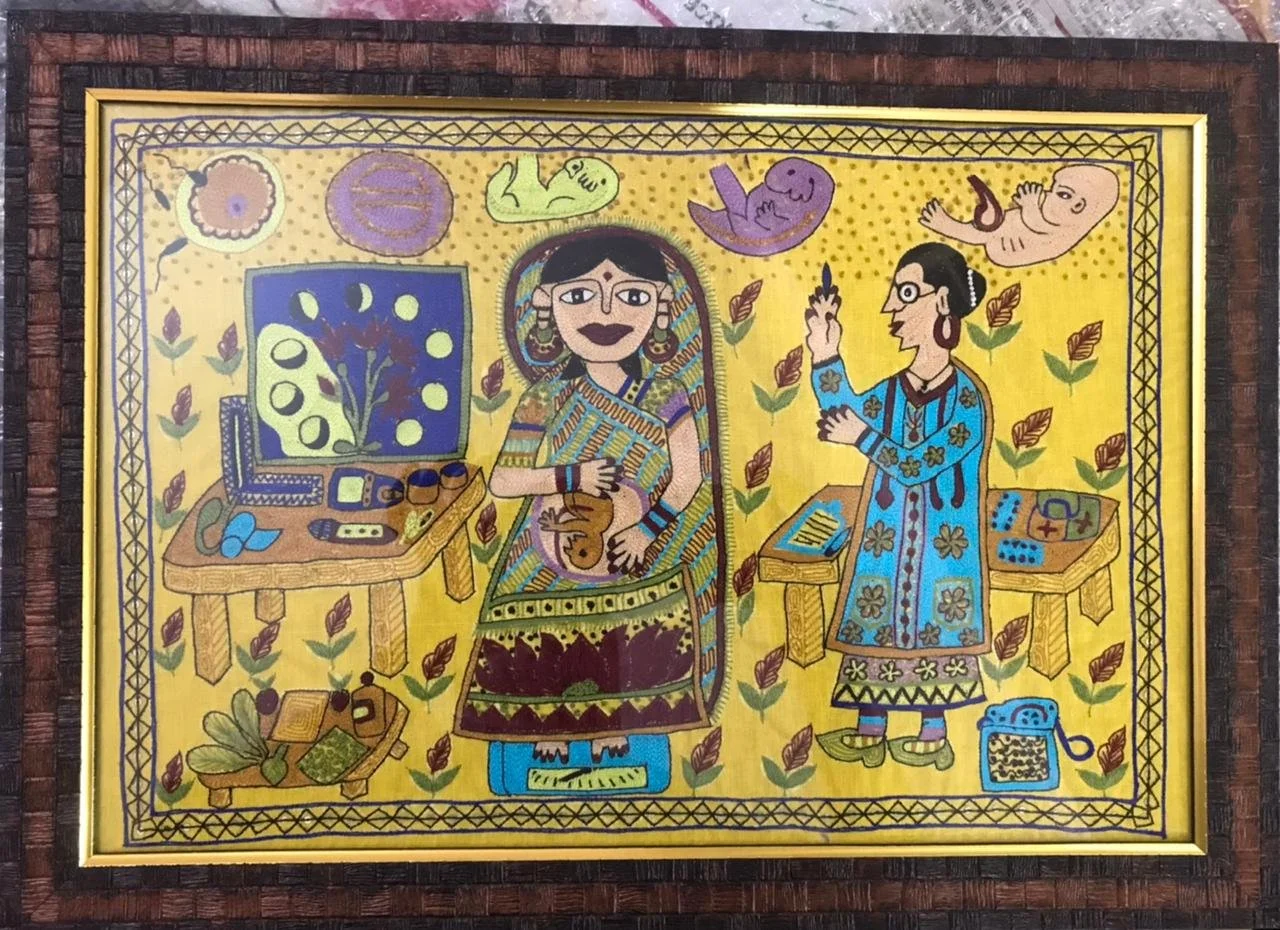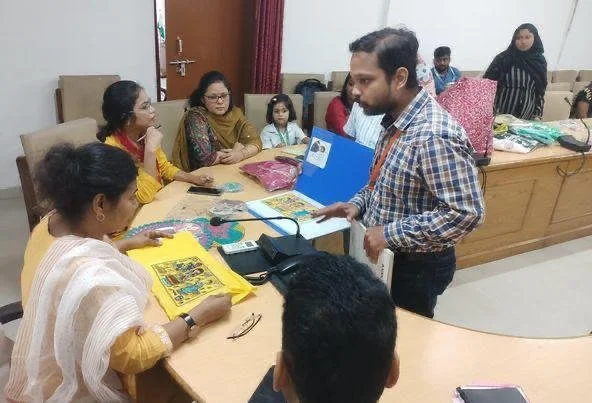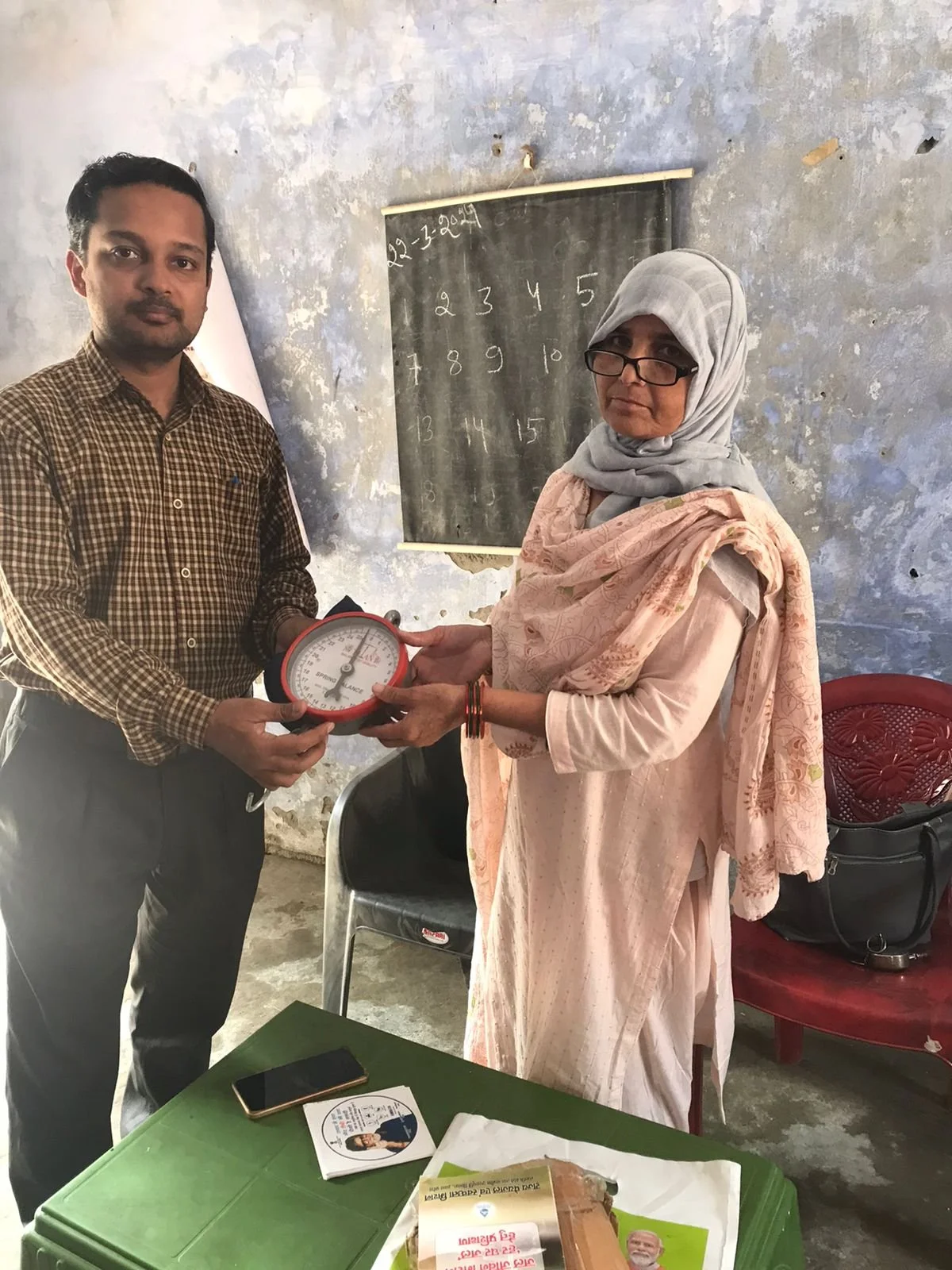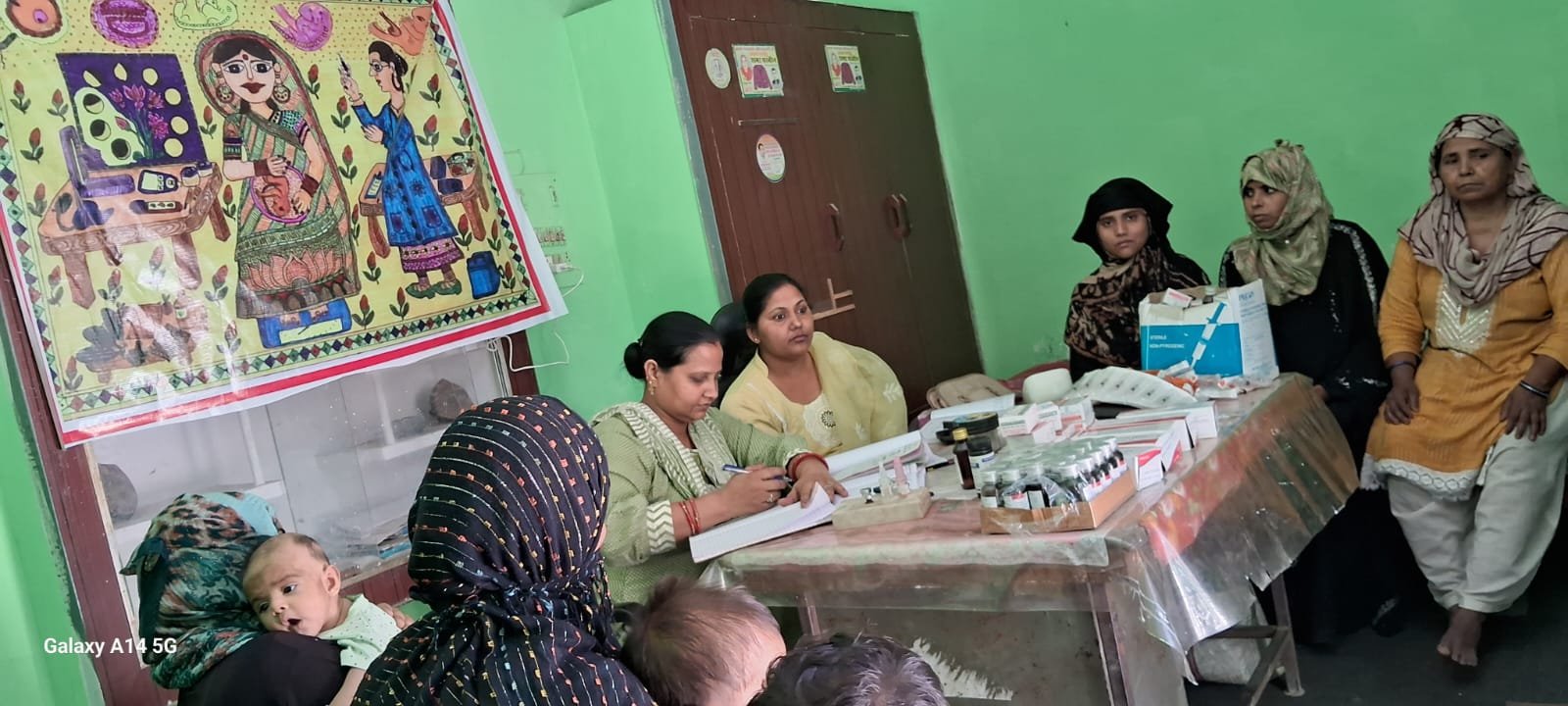
A Multi-Dimensional Approach to Promoting Maternal & Child Health, and Economic Empowerment
Salarpur Block, Budaun – Mayank Singh, U.P Chief Minister’s Fellow
Introduction
This unique initiative synergizes art, health, and education to address a critical public health issue: the importance of early pregnancy registration. By combining creative expression with practical application, this initiative has the potential to not only raise awareness but also empower women economically.
Problem Statement
Delayed pregnancy registration, the lack of functional measuring instruments in Anganwadi centres, and insufficient livelihood generation opportunities are significant public health and socio-economic concerns in many regions, including the Salarpur block. Late registration limits access to essential prenatal care, increases maternal and infant mortality rates and hinders effective health interventions. Inadequate measuring tools compromise the monitoring of child growth and nutritional status, further exacerbating health challenges. The lack of livelihood opportunities further impacts community engagement and economic resilience, making it difficult to address these issues effectively.
Innovative Solution
To address this challenge, a multi-pronged approach was adopted:
Folk Art as Advocacy:
A Madhubani painting, a style known for its vibrant colors and symbolic motifs, was created to visually depict the importance of early pregnancy registration. The choice of Madhubani style was intentional, as it is widely recognized and its lotus motifs are associated with fertility and auspiciousness. A yellow background, a color symbolizing optimism and vitality, was chosen to further enhance the message.
The painting was presented at a district-level meeting, where it was adopted by the district Medical Health Committee as a banner to be displayed at health and wellness centres to encourage early registration.
Art Meets Livelihood:
The painting was used as a design template for an Aari ki Kadhaai embroidery project. This intricate embroidery technique, a sub-category of Zari Zardozi (a GI-tagged craft of Budaun), involves using silk threads to create detailed patterns.
Self Help Group (SHG) women were trained in this skill by trainers of Zarkala Mahila Hastshilp Producer Company, providing them with a potential source of income and skill development.
The finished embroidery, a fusion of art and science, was showcased at a science exhibition organised by Budaun Science Club on 5-Nov-2024, winning recognition and a prize of Rs. 3000 for one woman.
The painting has the potential to generate additional income for the women involved in the embroidery project.
Art for Impact: Fundraising for Better Health Monitoring:
I leveraged the cultural appeal of my Madhubani paintings to fundraise by selling prints of my artwork. The proceeds were used to procure and donate essential measuring instruments to four Anganwadi centres, ensuring accurate health monitoring of children and facilitating timely interventions.
To amplify the impact, I highlighted this initiative through WhatsApp groups at the block and district levels, which drew attention from key stakeholders. This advocacy inspired the District Magistrate (DM) to allocate funds from other departments to equip additional centres where instruments were either missing or non-functional, significantly improving community health infrastructure.
Impact and Replication
This initiative has the potential to have a significant impact:
Increased Awareness: The Madhubani painting, with its strong visual appeal and cultural significance, has effectively raised awareness among women about the importance of early registration.
Empowered Women: The आरी की कढ़ाई (using Zari-Zardozi style) embroidery project has the potential to provide women with a source of income and skill development, promoting economic empowerment.
Innovative Learning: The integration of art and science will inspire creative thinking among students, aligning with the National Education Policy 2020.
This model can be replicated in other regions by:
Localizing the Art: Creating paintings and embroidery designs that reflect local culture and traditions.
Partnering with Health and other Departments: Collaborating with health authorities to distribute awareness materials and promote early registration.
Training and Empowering Women: Providing more trainings in traditional arts and crafts to create sustainable livelihoods.
